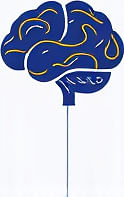Practical Time Management Hacks for ADHD in Remote Work
 by Shanie Goodwin
by Shanie Goodwin
Discover effective strategies to manage time with ADHD while working remotely. This article offers supportive tips on routines, tools, and techniques to improve productivity and balance, helping adults with neurodivergent conditions thrive at home.

Remote work presents unique opportunities for adults with ADHD, allowing flexibility in schedules and environments that can suit individual needs. Yet, it also brings challenges like distractions and difficulty with focus. This article explores helpful time management hacks, drawing from experiences of those with ADHD to promote better work-life balance.
Recognizing the Challenge
For many with ADHD, maintaining a steady routine in a home setting can feel overwhelming. Time often slips away without clear structures. Establishing simple daily rituals, such as starting the day with a short walk, helps create a mental boundary between personal and professional life. ADHD symptoms like hyperactivity might disrupt plans, but small adjustments make a difference.
Building a Routine
A consistent daily structure supports productivity without rigidity. Begin by listing key tasks each morning, prioritizing them based on urgency. This approach reduces the mental load and prevents decision fatigue. For instance, dedicate specific hours for focused work and breaks. Using a visual planner app can aid this process, offering reminders that align with personal energy levels.
One effective method is the Pomodoro Technique, where work occurs in short bursts. Set a timer for 25 minutes of concentrated effort followed by a 5-minute break. After four cycles, take a longer pause. This technique leverages the natural attention span many with ADHD experience, making tasks more approachable.
Breaking Down Tasks
Large projects can seem insurmountable, leading to procrastination. To counter this, divide assignments into smaller, manageable steps. For example, if a report is due, start with outlining sections rather than writing the full document. This step-by-step breakdown builds momentum and provides a sense of accomplishment.
Tools like to-do lists or digital apps play a key role. Apps with notification features keep things on track without overwhelming the senses. Remember to celebrate small wins, such as completing a task segment, to maintain motivation.
Managing Distractions
In a remote environment, distractions from home life are common. Create a dedicated workspace that minimizes interruptions, perhaps in a quiet corner with minimal clutter. Use noise-cancelling headphones or background sounds to foster concentration.
Another hack involves setting boundaries with technology. Limit social media access during work hours by using apps that block sites temporarily. This creates a focused zone, allowing deeper engagement with work responsibilities.
Incorporating Movement and Rest
Physical activity benefits those with ADHD by releasing endorphins and improving focus. Integrate short exercises, like stretching or a quick walk, into the day. These moments refresh the mind and prevent burnout.
Equally important is ensuring adequate rest. Aim for consistent sleep patterns, as fatigue exacerbates time management issues. Develop a wind-down routine in the evening to signal the end of the workday, promoting better overall balance.
Leveraging Technology
Digital tools offer practical support for time management. Calendar apps with color-coded schedules provide visual cues that resonate with visual thinkers. Experiment with options that include voice commands for ease of use.
For tracking progress, journaling at the end of each day highlights what worked and what needs adjustment. This reflective practice fosters self-awareness and continuous improvement.
Seeking Support
Connecting with others who share similar experiences can be invaluable. Join online communities or groups focused on neurodiversity to exchange tips and encouragement. Professional guidance, such as from a coach, might also provide personalized strategies.
Remember, progress comes from trial and error. Be patient with yourself as you implement these hacks, knowing that each step forward contributes to greater control and well-being.
In summary, these time management strategies empower adults with ADHD to navigate remote work more effectively. By incorporating routines, tools, and self-care, achieving productivity and balance becomes attainable, leading to a more fulfilling professional life.
